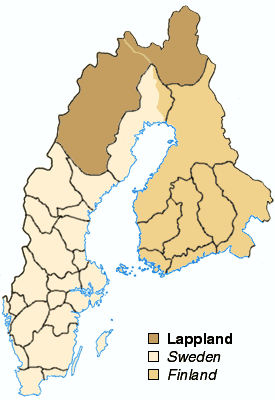Laponia (historical province)

Laponia (Swedish: Lappland) was a historical Swedish province, or landscape, in the north of Sweden which evolved from Lappmarken. In 1809, Sweden ceded the eastern part, along with the rest of Finland, to the Russian Empire, which in effect created a Swedish Lapland and Finnish Lapland.
Today, the Swedish part serves no administrative purpose. On the Finnish side, there was a Province of Lapland until 2010, when Finnish provinces were discontinued, and the province was replaced by the Region of Lapland.
Lapland is considered in some nations — notably the United Kingdom, Ireland, Serbia, Sweden, Finland, Latvia, Romania and France — to be the home of Father Christmas.
Population
The current population of Swedish Lapland plus the municipalities Enontekiö (Eanodat), Inari (Ánar), Utsjoki (Ohcejohka), Muonio (Muoná), Kittilä (Gihttel) and Sodankylä (Soad'egilli) in Finnish Lapland constitutes 125,151 individuals. The largest city is Kiruna (Giron) with 18,154 inhabitants.[1]
Historical districts
Before being split, Laponia was divided into juridical districts which were:
References
- ↑ See sourced data on the Wikipedia pages of these localities